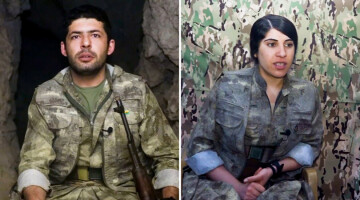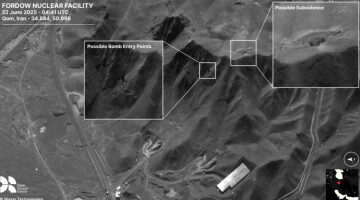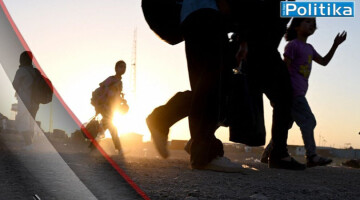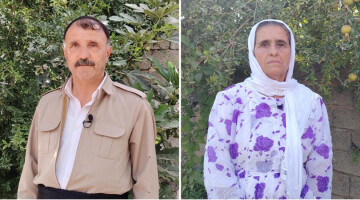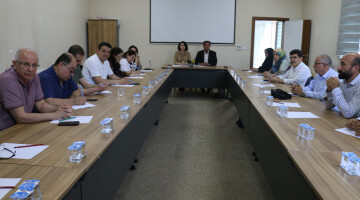The special war, waged through propaganda and psychological manipulation, is an integral part of the Turkish invasion attempt in the Medya Defence Zones protected by the guerrillas. The Turkish state is doing everything it can to sell itself successfully. In particular, a media apparatus completely under the control of the regime is used for this purpose. However, the reality on the front lines tells a different story. The ongoing resistance on the Zap front is an excellent example of the reality in the battlefield.
The guerrilla struggle has ushered in a Kurdish resurrection
A glance at history is enough to expose the continuity of Turkish war propaganda. Already at the beginning of the armed struggle on 15 August 1984, the Turkish state announced: "We will wipe them all out within 72 hours." But 40 years have now passed, and the guerrilla struggle has ushered in a Kurdish resurrection. The state repeatedly claims to have killed countless guerrilla fighters, a number so high that the PKK should actually no longer exist in many cases. Since 2015, the Turkish army has conducted large-scale operations against the Medya Defence Zones and Northern Kurdistan every year, always claiming that it has now finally destroyed the guerrillas. In doing so, the Turkish state uses state-of-the-art technology and banned weapons such as chemical warfare agents every year. Especially in the last three years, the use of chemical weapons such as tactical nuclear bombs has increased. Despite all these efforts, the Turkish state has so far been unable to achieve its goal.
Those who claimed to wipe out the guerrillas within a few hours have now been bogged down in the Zap region for three years and are taking heavy losses. Therefore, in addition to the factors mentioned above, intelligence, psychological warfare and cooperation with the collaborators of the KDP (ruling party in the Kurdistan Region of Iraq) also play a decisive role in the warfare. The Turkish state tries to cover up its own losses by using not only Turkish soldiers but also mercenaries from Syria and other countries.
The state covers up its losses
The state propaganda contrasts with the documents of the guerrillas, who regularly report on their actions, document them with videos and openly report their casualties. Hardly any armed force conducts its struggle in such a transparent manner. In most of the videos, it is clearly visible how at least one Turkish soldier is killed. These recordings only concern actions that have been videotaped, while numerous other actions take place against the Turkish invading army. Last year, the guerrillas even published the identity cards of soldiers whose bodies had come under their control. Despite the overwhelming evidence, reports of Turkish soldiers killed by the Turkish state are extremely rare. This fact raises the question of where the bodies of the thousands of Turkish soldiers killed remain and who the deceased are if they are not Turkish soldiers.
To keep up the morale of society and the army, the Turkish state pretends that there are hardly any casualties on its side. As documented by the guerrillas, the Turkish army repeatedly throws the bodies of its own soldiers into ravines or burns them. For the Turkish state, the lives of its soldiers are worth little, in stark contrast to the officially cultivated cult of martyrdom. The mortal remains of soldiers are held in even less esteem. When dead soldiers are reported, they are portrayed as victims of falls in ravines, lightning strikes or similar accidents. Nevertheless, the Turkish state is obviously unable to hide the reality.
The obvious contradiction between the claim to have wiped out the guerrillas and the deployment of tens of thousands of soldiers in the combat zones is obvious to everyone. This is especially true for Northern Kurdistan. If the guerrillas had indeed been completely wiped out there, why are so many military operations taking place in these areas? If there are no guerrillas there, against whom are these operations carried out, and who are bombed in the mountains?
The reality of war is shown in the footage of the guerrillas
The reality of war is shown in the footage of the guerrillas. While the guerrillas strike in the mountains, autonomous groups like the "Children of Fire" carry out actions against fascists, the Turkish police, authorities and companies of the regime. Such actions take place on a daily basis. The Turkish media repeatedly report accidents or fires that have broken out by chance, while the "Children of Fire" claim responsibility for their actions. This shows that the Turkish army cannot make Kurdish children bow down.
In the mountains, a highly equipped army that uses the latest technology and carries out heavy bombardments against the mountains faces a guerrilla force that is technically inferior but tactically highly mobile and superior in terrain and tunnels. The guerrilla videos clearly reflect this reality and show that even under the heaviest attacks, the guerrillas are able to go on the offensive in the Medya Defence Zones. The guerrillas' professional fight suggests that success of the resistance is quite possible.





